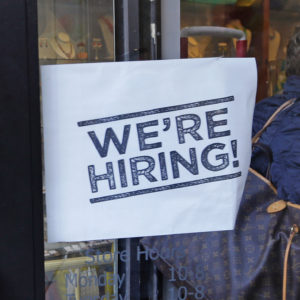Massachusetts and eight other states drove down national unemployment over the past year with most other states showing no significant difference.
National unemployment has decreased since the recession almost a decade ago. The decline slowed down over the past year as the economy reached close to full employment. The Bureau of Labor Statistics (BLS) found in a report Wednesday that nine states still saw a significant decline in unemployment.
“The largest of these was in Massachusetts, where the unemployment rate went from 4.9 percent in November 2015 to 2.9 percent in November 2016,” the report detailed. “Nevada and South Carolina also had unemployment rate decreases of more than 1.0 percentage point.”
California, Nevada, Arizona, Arkansas, Mississippi, South Carolina, Maryland, Massachusetts and Vermont saw a notable decline in unemployment. The report found 39 states had no significant change in their unemployment rates. Many of those states already achieved low unemployment numbers in years past.
“New Hampshire and South Dakota had the lowest unemployment rates in November 2016, both 2.7 percent,” the report stated. “Alaska and New Mexico had the highest jobless rates, 6.8 percent and 6.7 percent, respectively. The national unemployment rate was 4.6 percent in November 2016.”
The BLS looks at employment rates on a monthly basis with November being the most recently available data. The state review looked back a full year to November 2015. Oklahoma and Pennsylvania were the only states that had a notable increase in their unemployment rates this past year.
“In both states, the rate increased by a full percentage point,” the report stated. “In Oklahoma, the jobless rate increased from 4.1 percent to 5.1 percent, and in Pennsylvania it went from 4.7 percent to 5.7 percent.”
National unemployment increased to a high of 10 percent in 2009 as a result of the recession. The recession was sparked by the subprime mortgage crisis and the financial crisis of 2007. The recovery in the years since has been sluggish but has still resulted in significant improvements.
The economy is still facing some major challenges despite the improvements. The labor force participation rate has fallen considerably since the recession. The participation rate tracks the number of employed and those actively seeking work as a percentage of the total population. Only 62.7 percent of the country is currently in the labor force.

